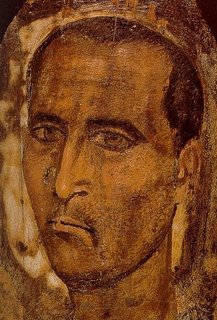Bl. Damien de Veuster, SS.CC.

The word “leper”, meaning one possessed by a type of disease that devours flesh and bone, still makes us shudder, and brings to mind those victims of leprosy who, in the Bible and in medieval times, were excluded from human society because of the contagiousness of their ailment. That type of leprosy, now called “Hansen's Disease”, has survived up to the present. In our own century, fortunately, medical science has found ways to treat and even to cure it.
In the 1860s, there were no such remedies. Consequently, when an epidemic of the disease hit the Sandwich (Hawaiian) Islands, the ruler, King Kamehameha V, (this was before the United States acquired the Islands) ordered that the victims be rounded up and exiled to the barren island of Molokai. The 800 so quarantined, given little or no government assistance, and not even police to maintain public order, soon became lawless and hopeless, and the island a living tomb.
Eventually, however, a group of dedicated Catholics on Molokai asked the missionary bishop in Honolulu to send a priest to the island. The bishop agreed, and in 1873 sent a young member of the missionary Picpus Fathers (Congregation of the Sacred Hearts of Jesus and Mary), who had volunteered for the job. He was Damien Joseph de Veuster, SS.CC.
Father de Veuster was a Flemish Belgian, a native of Tremeloo. His was a farming family, and his father expected him to become a trader in grain. But Joseph's brother Pamphile, already a member of the Picpus Congregation, interested him in joining the same community.
He took his vows as “Damien”, a lay brother, in 1860. The community did not plan to admit him to the priesthood at first, for he was no theologian but a hearty, cheerful man who was a practical “doer”. Sent to the Hawaiian Island missions in 1863, he was, nevertheless, ordained a priest after arrival, and spent his first eight years in arduous work on the rural and island missions.
Father Damien, though zealous for souls when he volunteered for the leper island, was not yet a hero. When he first arrived, he slept under a tree for fear of contagion. But as he grew used to the lepers, he saw that their needs were physical as well as spiritual. So he became closer to them, lovingly dressing their sores, sharing his food and even his pipe with them, making their coffins, building them churches and houses and orphanages.
Most of all, he became the champion of these outcasts and their better medical care. Hitherto a quiet man, he now turned into a ferocious lion when it came to demanding assistance for them from the government and the church. He had planned to work at Molokai for only a certain term. As it happened, he spent the rest of his life there.
Especially in his later years, he suffered much painful opposition. Some jealous non- Catholics denounced this rough- cut philanthropist, and even among the Picpus Fathers he had his critics. One of his greatest trials was lack of communication, and the inability to see any priests, even for confession.
In 1885 he himself contracted leprosy. When he discovered it, he made the announcement by addressing the congregation as “we lepers”. But being a leper grieved him far less than the opposition of his fellow priests.
Towards the end of his life, he was comforted by the arrival of two “lay brothers” to assist him. Equally welcome were the Franciscan Sisters, Conventual, from Syracuse, N.Y., who arrived in 1883 under the leadership of Blessed Mother Marianne Cope, and who labor at Molokai to this very day. The “Leper Priest” died on April 15, 1889.
Criticism of Father Damien did not cease with his death. The Rev. Dr. Hyde, a Protestant clergyman, wrote of him as a man of dubious morals. In 1900, the famous author Robert Louis Stevenson, also a Protestant, answered Dr. Hyde with an impassioned refutation. Correspondence in the Pacific Commercial Advertiser of Hawaii also proved that Hyde had misread his sources.
Father de Veuster's remains were taken to Belgium in 1936. His cause for canonization was introduced in 1955; he was declared “venerable” in 1977; on June 4, 1995, he was beatified by Pope John Paul II.
Leprosy has not vanished, but is mostly under control. The parallel disease of AIDS has taken its place as a deadly worldwide contact disease. Blessed Damien shows us how to act towards these new outcasts: Serve them lovingly as we find them.
~ Father Robert F. McNamara


0 Comments:
Post a Comment
<< Home